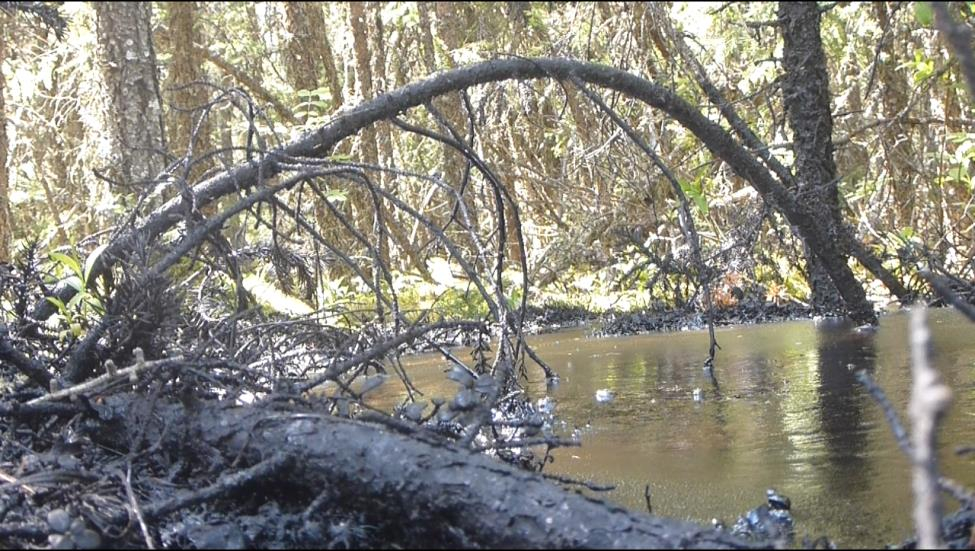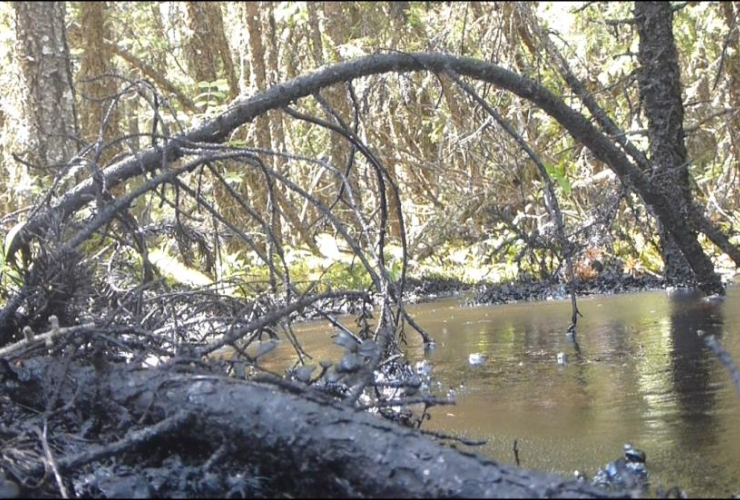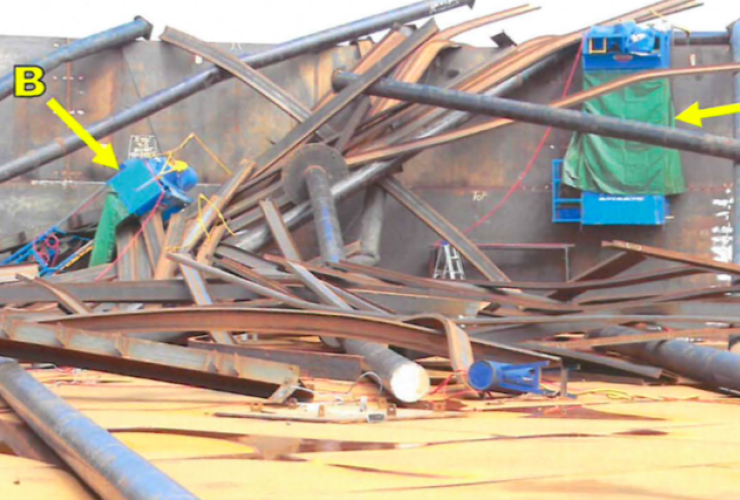Environmentalists and First Nations are raising concerns about a heavy oilfield in northeastern Alberta that may still be seeping water and bitumen years after the flow was first discovered.
The field, owned by Canadian Natural Resources Ltd. (TSX:CNQ), was the subject of a major investigation by the province's energy regulator after a major "flow-to-surface event" in 2013.
Surface water collected near four fissures in the ground continues to show an oily sheen. The Alberta Energy Regulator says a fifth, which first leaked in 2009, stills oozes small amounts of fresh bitumen.
The regulator says the situation is well-managed and CNRL considers the leak over and cleanup complete.
Fraser Thompson of the environmental law firm Ecojustice said it's disturbing the leakage may be ongoing.
"There's reason to be concerned that after what's been about 3 1/2 years, the bitumen is still coming to the surface and the AER hasn't been able to tell us when it's going to stop."
In June 2013, the Alberta Energy Regulator reported a leak in CNRL's Primrose field near Cold Lake, Alta. Eventually, it emerged that nearly a million litres of bitumen mixed with water had seeped from fissures in the ground.
In a report released in the spring, the regulator blamed CNRL's extraction method, which depended on injecting waves of high-pressure steam underground to soften the bitumen and force it toward collection wells from where it was pumped. The company was using too much pressure, the report concluded.
The regulator required CNRL to use a different approach, with lower steam pressures, and granted permission for the company to resume production from the field.
Surface water from the four sites involved in the 2013 leak continues to show effects, confirmed Julie Woo of CNRL.
"Bitumen seepage is not present in the surface runoff water currently being collected at the sites. That said, the water may contain a residual sheen."
Bitumen continues to seep from the 2009 site, said AER spokeswoman Carrie Rosa.
"That first flow-to-surface still experiences occasional seepages," she said.
"When it's cold and frozen, the flow will stop. It is very, very slow and very, very minimal."
The regulator, which has its own field inspectors, doesn't have information on how much has leaked. The water and the bitumen are collected and kept out of the ecosystem, Rosa said.
Woo said biweekly visual checks revealed no bitumen this year at the 2009 site.
"Based on these observations, we are confident that the seepage has ended. We continue to monitor and visually inspect the site."
The company website states: "Canadian Natural has fully cleaned up the flow-to-surface sites."
Crystal Lameman, treaty co-ordinator for the Beaver Lake Cree First Nation, said her band has had concerns about the site since 2008 and is in court trying to get access to it. The site is within the band's traditional territory.
The band is worried about the cumulative effects of heavy industry impact on its land. Lameman said the band isn't satisfied with CNRL's response.
"Our ancestors are buried there," she said, speaking as a band member.
"We have a right to question and we have a right to receive an honest, transparent answer. And that's what we're not receiving."
Nancy Scanie, an elder from the Cold Lake First Nation, said energy development in the area has taken a heavy toll.
"We have no more animals. We have no more fish. We have no more berries, no more medicines. How much more damage do they want to do?"
There is damage at Primrose
There is damage at Primrose that will never be remediated. Even the AER recognized that 3 out of 4 enabling conditions of the FTS events were controllable.
"2.7.2 Views of the Panel
The panel agreed that the four enabling conditions identified by CNRL were major factors for
understanding the development of the FTS events at Primrose. Of the enabling conditions identified by
CNRL, the panel considered that three aspects were controllable:
• the existence of a cased well or open-hole wellbore with poor sealing along at least a portion of its
path;
• excessive uplift generated by operational steaming of the Clearwater reservoir; and
• excessive fluid volume released from the Clearwater reservoir into the Grand Rapids Formation"
The fourth enabling factor were vertical and horizontal faults and fractures that were generated by over-steaming and over pressurizing the formation. This damaged the overlying cap rock of the target formation and fractures migrated upwards through the overburden formations, allowing bitumen and produced water to reach the surface.
There is no possible restoration for these damaged formations, therefore, hydrocarbon laced produced water will continue to flow to surface, even the AER acknowledges this situation is uncontrollable. If CNRL exceeds pressure restrictions now placed on the project, or when summer temperatures of the overburden formations do not freeze the bitumen as it migrates upwards out of the steamed formation, bitumen will also continue to flow to surface. The freeze, thaw cycle of bitumen migrating out of the target formation, may actually be exacerbating the fracture scenario.
When you have a regulator that has no regard or mandate for public interest or public health and refuses to acknowledge any harm or environmental damage, much less keep appropriate track or records of volumes of bitumen and produced water flowing to surface, there is nothing for the residents to do but watch their traditional lands be destroyed and contaminated.
No member of the public gets honesty or transparency from the AER. The AER serve only one purpose, enable and approve industry, to damage as much as they want.
Plus ça change, plus c'est la
Plus ça change, plus c'est la même chose.
With current "regulators", quelle surprise?






Comments